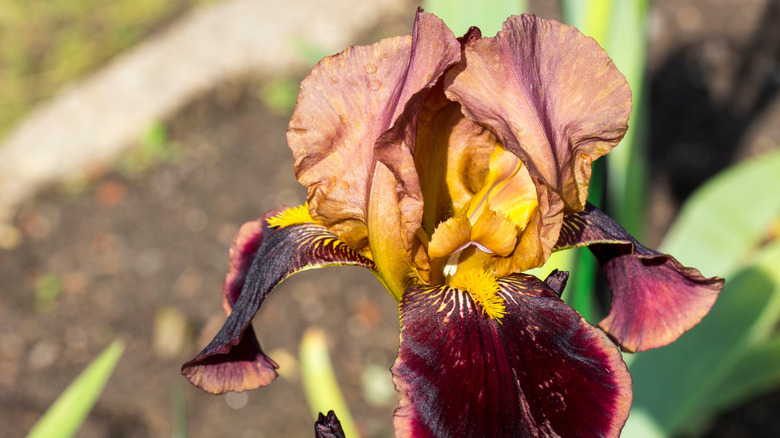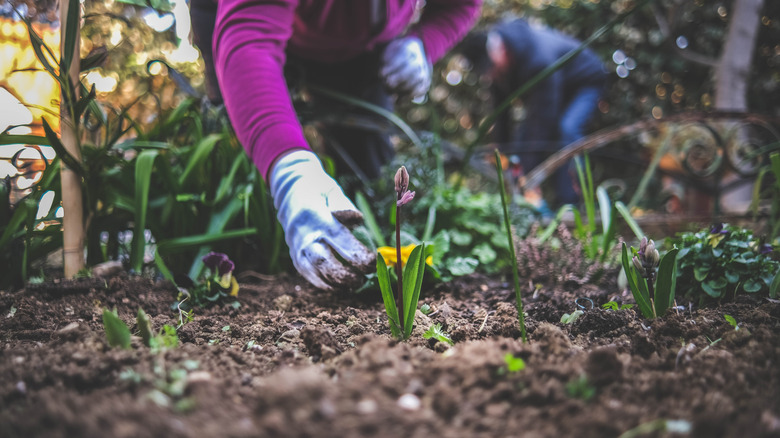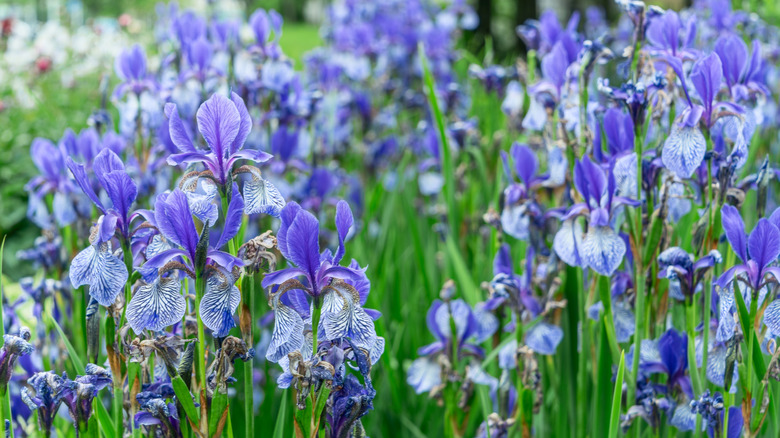The Simple Soil Addition That Will Help Your Irises Thrive
If you love irises (Iridaceae), you're in good company. These stunning flowers are a perennial go-to among gardeners for many reasons: They come in virtually any color variation you can imagine, can adapt to different growing conditions in Hardiness Zones 3 through 9, and are all native to the northern hemisphere. However, this plant sometimes needs a little extra help to thrive, especially in wetter climates. If your irises are struggling, consider adding gravel to the soil as a drainage material to relieve your plants of excess moisture. It's a simple, easy swap that can make a noticeable difference in the overall health of this plant.
Drainage is a high priority for irises, particularly when planted in pots, because they're susceptible to fungal diseases and bacterial rot. Both of these problems result from exposure to excess moisture. Bacterial rot is particularly common in bearded irises (Iris x germanica) — often, you can smell the foul odor of rot once it reaches the plant's rhizomes— the chunky bulbs at the end of an iris. By incorporating gravel to your irises' soil to improve drainage, you'll ensure that they dry out completely between rain storms or waterings, promoting growth.
How to add gravel to your irises' soil
Adding gravel to the soil surrounding your irises is super straightforward. If you're into gardening, you probably already have the necessary tools lying around. First, obtain the material you plan to use to bolster drainage. Gravel, grit, and organic matter like compost are all viable options. Then, use a small shovel to remove your iris from the ground by the root ball, being careful to leave it (and the rhizome!) intact. Thoroughly blend some of your drainage-boosting additive into the soil, and then replant the iris in the newly mixed soil. Position it shallowly in the soil, ensuring that the rhizomes remain above ground.
Planting irises straight from the nursery? You may want to consider trying out a simple DIY test to check the health of your soil, its Ph levels, and its drainage capacity. If it's loosely packed, Ph neutral, and drains well, then there's probably no need to alter the soil composition. However, if it's not up to par, or you're replanting your irises into a pot, you should supplement the soil with some gravel, grit, sand, or compost. For additional drainage support, you can also plant your irises in a raised garden bed. The boost of height will help keep the plant's rhizomes out of waterlogged soil.
Light watering and regular inspections can also keep your irises healthy
As noted above, irises can get finicky and even develop afflictions when their soil becomes waterlogged and can't drain properly. Bearing that in mind, avoid over-watering your irises. This plant thrives in full sun and, once established, rarely needs supplemental water. By all means, if you're in the middle of a summer drought, give 'em a light watering. However, if it rained overnight or in the morning, you can definitely skip it. In general, it's best to water irises in the morning so they have a chance to fully dry out during the day.
Dealing with excessively humid or rainy weather? That should be your cue to inspect your irises. It's a good idea to get into the habit of regularly checking them for spotting on the leaves (a sign of a fungal infection), or poor growth and a foul smell (both signs of bacterial rot). If you notice anything funky, you can always cut out the affected area to prevent the disease from spreading throughout the plant.


